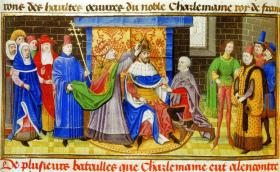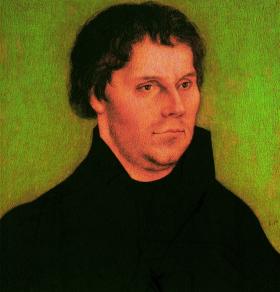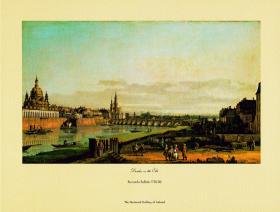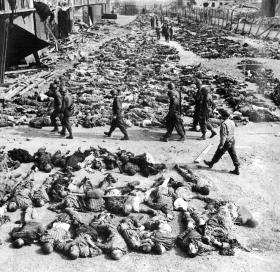How the Great Story could be better told…
Published in 20th-century / Contemporary History, Features, Issue 5 (Sep/Oct 2005), Volume 13Desmond Fennell takes a critical look at the dominant narrative of the ‘History of Europe’… and finds it wanting.

The coronation of Charlemagne by Pope Leo III in 800—prelude to the establishment of a distinct European civilisation. (Bibliothèque de l’Arsenal, Paris)
In the 60 years before World War I, when Europe was dominating and leading the world, historians in France, Germany and England gave the history of Europe up to their own time its definitive shape. It was a time when Protestants and Progressives were conducting the affairs of Europe. What was to become the standard ‘History of Europe’ up to World War I was written by such men or to satisfy such men. It was a mythical narrative that showed European mental, moral and material progress after the end of the ‘Middle Age’ and the beginning of the ‘Modern Age’. The ‘Middle Age’ was a time of darkness, stupidity, cruelty and oppression. The ‘Modern Age’, beginning with the Renaissance and continuing through the Reformation, England’s Glorious Revolution, the Scientific Revolution, the Enlightenment or Age of Reason, the French Revolution, the Rights of Man and the Industrial Revolution, was an age of growing liberation of minds and persons and of moral improvement. During these centuries, through the agency of successive European élites, the Good of today repeatedly triumphed over the Evil of yesterday. Truer understanding of life repeatedly replaced inherited illusion; respect for human beings and kindness replaced inhuman practices; legal changes, science, new technology and increasing wealth increased human power and freedom. As a result of these advances, so the story went, Europe became the leader, ruler and civiliser of the world.
The Whig interpretation of history
This was what Herbert Butterfield, writing from an English perspective before the Second World War, called ‘the Whig interpretation of history’. Clearly, the History of Europe told in this manner was a myth that, on the one hand, showed the Protestant and Progressive élites as the culmination of European progress and, on the other, justified European imperialism. Using a phrase adapted from Mao Tse Tung, we might also call this the ‘Great Leaps Forward’ version of European history.
The Progressives who unified Italy after 1860 made it the history taught in Italian schools (it contradicted in various respects Italy’s previous understanding of its history, but the Italian Progressives wanted to unite Italian history with European). In all European languages this Protestant-Progressive history entered the encyclopedias and the dictionaries and has remained there to this day. We find it reflected in everyday journalism: contemporary instances of cruelty or ignorance or backwardness are described as relapses to the ‘Middle Ages’; ‘modern’ means good, enlightened, civilised, of benefit to man.
However, in the real world, World War I took place. To the historians of Europe who came after it, it looked like madness and enormous cruelty and the opposite of civilisation and reason. Then, as they were adding it awkwardly to the standard history of Europe, Fascism and Nazism appeared and there was World War II. America, the most powerful part of Europe Overseas, became the determining force in European history. In theory, the Americans were the heirs par excellence of all that progress in true understanding, human rights and humane behaviour that had characterised the West for centuries. What were the historians of Europe to do? They were faced with the most murderous century in human history; and for the greater part it was the work of Europeans at home or of their descendants or relatives in America. How could they relate this to the story of the Great Leaps Forward?
They did so by suggesting that in the twentieth century it was discovered that the great advances of Good in European history had not entirely eliminated Evil. Evil had appeared again in great strength. But, happily, in the two great wars of the century those Europeans, at home or overseas, who had profited morally by the great advances were victorious over Europeans who had not. Even the massacres of the century were divided between Good and Evil: Auschwitz and Belsen were evil, Hiroshima and Dresden were good. So the standard history was saved; Good was still triumphant. With some irony, the English historian of Europe Norman Davies calls this ‘the Allied scheme of History’.
A true clear history that makes sense

Martin Luther c. 1525 by Lucas the Elder—there was no such event in European history as ‘the Reformation’. (Bridgeman Art Gallery)
The minimum we require when we read the history of a people or a civilisation—say, Egypt, Rome or Persia, China or Japan—is a story that is true and clear and that makes sense. Making sense is particularly important when it is a matter of the history of our own nation or our own civilisation. Sense then means that the story has an intelligible beginning and an intelligible development and that, when it approaches our own days, it accords with and explains why things are now as they are. The standard history of Europe does not possess these qualities of truth, clarity and sense. It is therefore bad history.
I intend to criticise it and to suggest a manner of telling it which would possess those missing qualities. My purpose in so doing is not to urge change in how the story is told in the schoolbooks and the reference works, for such change is impossible. Since the nineteenth century many books by reputable historians have corrected and revised every period of the standard history, beginning with its ignorant caricature of the Middle Age. These studies have affected the teaching of every period of European history in the universities. But all that mass of piecemeal revision, and all that revised teaching in universities, has not resulted in the story as a whole being substantially changed. The standard story, even including the two world wars, has an attractive structure. It is entrenched in the encyclopedias and dictionaries; many publishing programmes depend on it; academic careers have been built on it; it is deeply entwined with the collective psychology and dominant ideology of the West. For all these reasons it will not be significantly changed. Only when European history comes to be written independently by, say, Indian or Chinese historians will it be told in the normal, factual way in which history is usually told; for example, as we tell Chinese or Roman history. So my purpose in sketching a better way of telling the history of Europe is very limited. It is the same modest purpose I had in mind when I spent two years writing a little book on the subject, The revision of European history, published in Ireland in 2003. That purpose is stated on the book’s cover: ‘to enable readers of the standard history wherever encountered to note the main distortions and make appropriate mental corrections’. My recommendations for a revised narrative are merely a means of providing the required criteria.
The ‘Modern’ Age
I begin with the absurdity at the end of the standard story. It does not make sense that Europeans from around 1500 became progressively wiser and morally better and then, after 1914, produced the most murderous century in human history. This can be remedied by doing two things. First, remove ‘modern’ as the description of this second age of Europe. The word has come to connote an indiscriminate moral approval. Second, narrate the history of Europe’s second age on the basis only of the available evidence. There is sufficient evidence for the political, social and economic history of these centuries. There is no evidence that between 1500 and 1914 Europeans, or more precisely their élites, became morally better persons or improved their overall understanding of reality; there is evidence only that their knowledge of physical reality advanced greatly. Narrate, then, that, as in other evolving civilisations, a succession of worldviews were adopted by successive élites; that these included modifications of the prevailing ethical system; and that as a result of this and other factors there were certain legal, political and social developments. Narrate in particular, as the feature most characteristic of these centuries, how Europeans, individually and collectively, by means of physical science, legal provisions and technological advance, achieved a mastery of nature and the world unequalled by any previous civilisation. As for the twentieth century, narrate it mainly in terms of its central feature: the final struggle to determine which of the most powerful western powers—England, Germany or the United States of America—would emerge on top.
Here a further improvement suggests itself. Because America emerged on top, and since World War II has formed with Canada and western Europe what we might call an ‘Ameropean’ entity, tell the history of Europe after 1492 so as to reflect the growth of this transatlantic relationship. Represent 1492 as the start of Europe’s, so to speak, Magna Graecia—its ‘Europe Overseas’—so that it is clear to Europeans that when their ancestors settled and became active in other continents, but especially in America, they remained Europeans, as the Greeks of Magna Graecia remained Greeks.
When the general narrative of the second age has been reformed in this manner, there remain only some ‘big words’ to correct. For example, there was no such event in European history as ‘the Reformation’, even if we understand that as shorthand for ‘the Protestant Reformation’. Using the word ‘Protestant’ to signify European Christians who broke with Rome, the historical fact is that in the course of the sixteenth century, in a number of countries, Protestant reformations of various kinds occurred. The heterogeneous plural is less dramatic, less like a trumpet blast, but it is the truth. The real big event of the century was ‘The Division of the Church’.
It is also bad history to speak of ‘the Enlightenment’ as a historical event. Actually, until the late 1800s, there was no word for it in Italian. Then, the Italian dictionaries tell us, l’Illuminismo was invented to translate the French ‘century of lights’. The corresponding English word, the ‘Enlightenment’, suggests a collective spiritual experience such as mystics and pious Buddhists achieve. First used in 1865, it was a tendentious rendering of the sober German die Aufklärung, which means literally the ‘Clarification’ but, according to Kant’s definition, the attainment of independent personal thinking. As the variety of names and concepts suggests, there is no agreement as to what the phenomenon in question was. In a book called The Enlightenment by the Englishman Norman Hampson, published in 1968, the honest author states:
‘The attitudes which one chooses to regard as typical of the Enlightenment constitute a free, subjective choice . . . Within limits the Enlightenment was what one thinks it was.’
And in 2000 another Englishman, Roy Porter, prefaces his book on ‘the Enlightenment in Britain’ with that last sentence: ‘Within limits the Enlightenment was what one thinks it was’. Surely the best way to deal with the intellectual history of 1680–1798 is to banish ‘the Enlightenment’ and its equivalents and call the period only ‘the Age of Reason’. That records, in clear terms, the historical fact that, during this period, Reason and the effort to think and act rationally were central preoccupations of European intellectuals and rulers. I will deal later with another empty ‘big word’ in the standard story, the ‘Renaissance’.
Pre-Columbian and Columbian

Detail from Dresden on the Elbe by Bernardo Bellotto (1720–80)—one of the gems of baroque architecture totally destroyed by Allied bombing in January 1945. (National Gallery of Ireland)
Background: July 1945—an atomic bomb is exploded for the first time. Within a month atomic bombs were dropped on the Japanese cities of Hiroshima and Nagasaki. (Jack W. Abey)
The history of Europe, as a distinct civilisation, began around the year 1000. The last barbarian incursion from the East—the Magyars—had been defeated by the German emperor in 955. The Viking incursions came to an end. In western Europe the space was secure for what turned out to be a successful attempt to found a civilisation. The prelude to it, which amounted to a first attempt, is not to be found where the standard History of Europe suggests: three centuries previously in the period of declining Roman power in the West. It occurred in the Frankish kingdom, later empire, between 750 and the death of Charlemagne in 814. It was after that first attempt had failed that the second, successful, effort got under way around the year 1000.
It was located in France, parts of Germany and the Italian communes, with France in the lead. It followed a course similar to that by which all civilisations had been founded. The control of land and its productive use were so organised as to give a regular surplus of food that enabled the growth of cities, the construction of large buildings and the development of trade. Rules were laid down for everything from clerical behaviour, warfare and reasoning, to markets and the game of sexual love. Law was clarified and backed by the armed force of the rulers; justice was administered in the rulers’ courts. The training of an intellectual élite was provided for in the first universities, a European invention. Nourished by its inheritance from the Graeco-Roman past and by the contemporary Arab civilisation, a vigorous European intellectual life emerged. With the new security and growing wealth, the arts found a space in which to flourish, by the late twelfth century in France and Germany, and the late thirteenth in Italy.
Uniquely and absurdly among the civilisations of world history, this first age of Europe is called in the history books ‘the Middle Age’. Myth is at work here too, in this case a myth created in the fifteenth century by Italian literati for their own chauvinistic purposes, and two centuries later applied to western Europe as a whole by northern historians and literati. In countless books since the nineteenth century, beginning with Ranke, who wrote ‘The Middle Age has no reality whatsoever’, historians have decried this term as historically useless while continuing to use it. No carpenter would do likewise with a bad tool.
Given that there is a fair amount of agreement that this first age of Europe ended around 1492 with the discovery of America by Columbus, we could aptly call it the Pre-Columbian Age. Since ‘Pre-Columbian’ is a term used by American historians for American history, that would fit well with what I have said above about the usefulness of coordinating the writing of European and American history from around 1500 to the present day. The second age of Europe, which we have freed from its tendentious ‘modern’ tag, could then be called appropriately the Columbian Age. Together, ‘Pre-Columbian’ and ‘Columbian’ would leave historians free to narrate the history of these ten European centuries freshly, without the straitjacket of forced conformity to a nineteenth-century mythology that makes no sense for us.
The so-called Rebirth

Death camp, Nordhausen, 1945—American troops organise the bodies of 3,000 slave labourers for burial. (John Florea/Life/Timepix)
The only important remaining obstacle to truth, clarity and sense is the so-called ‘Renaissance’, which the standard history represents as an abrupt discontinuity between the first age of Europe and the second. It is represented as occurring in Italy and, in an extended sense, throughout Europe in the years 1450–1550. The Italians first put il Rinascimento into their history books in the 1860–70s. They called it the Rinascimento (the Rebirth) to distinguish it verbally from la rinascita delle arti e delle lettere (the rebirth of arts and letters), the designation they had traditionally and accurately used for the cultural history of Italy from 1250 onwards. They now inserted il Rinascimento into their history because two Liberal-Progressive gentlemen, the Frenchman Michelet and the Swiss Burckhardt, had written books that proclaimed that in 1450–1550 a momentous Rebirth had occurred in Italy, and their books had acquired great fame in northern Europe.
Michelet was the first to use the term la Renaissance as an absolute, without adding the traditional qualification ‘of letters’ or ‘of learning’. La Renaissance, he wrote, was ‘the emergence of certainty and life, the discovery of man and the world’. Burckhardt made it also the birth of Modern Man, that is, of men like himself and Michelet and their acquaintances. The root of this can be found in the principal compilation of so-called Enlightenment wisdom, the Encyclopédie, published in 1751—more precisely, in its introductory essay, written by d’Alembert. There, referring to the fall of Constantinople in 1453 and the migration of Greek scholars to Italy, d’Alembert wrote the following piece of ignorant pseudo-history, using the historical present:
‘The Greek empire is destroyed: its ruin sends coursing again into Europe that little sum of knowledge that still remained in the world. The invention of printing, the protection of the Medici and of Francis I, reanimates minds; and light is reborn everywhere [my italics].’
Obviously, if you believed that—and the ‘century of lights’ said so!—it was easy to believe and to write anything about the period 1450–1550 in Italy.
I conclude with a summary of what really happened in Italy and Europe in those years. In the mid-1400s in Italy, after more than two centuries of high culture second only to that of France, a period of exceptional and sustained creativity began. It was not a Rebirth or an interruption of any kind, but a splendid culmination of the Italian culture of those previous centuries. In part it was inspired by a greatly increased investigation of the Romano-Greek heritage and a corresponding celebration of it. Other high creative periods had already begun in Flanders and Portugal, and now, too, from mid-century, innovation flourished in Germany. The Flemish, Italian and German movements exerted influence throughout Europe; but the Italian movement—which, remember, included the oceanic voyages of Columbus, Vespucci and the two Caboto—had by far the greatest impact, so as to give Italy a cultural primacy in Europe. All four waves of innovation continued into the 1500s, with the Flemish one much reduced, the German strong to the 1530s, the Italian powerful to mid-century and continuing with somewhat diminished strength into the 1600s.
All these high creative periods were culminations in their various ways of the culture of Europe’s Pre-Columbian Age. But they were also modifications of that culture. In the course of them—and here the Spanish explorations in America worked together with them—the second age of Europe began. The principal common characteristic that the high creative movements and the Spanish expansion exhibited was a greatly intensified desire to explore, to the ultimate human earthly possibility, and to master the world in all its aspects. That impulse, the roots of which lay in Europe’s first age, was to become the most notable characteristic of its second or Columbian age.
Desmond Fennell’s latest book is Cutting to the point: essays and objections 1994–2003 (Liffey Press, 2003).
Further reading:
J.B. Bullen, The myth of the Renaissance in nineteenth-century writing (Oxford, 1994).
H. Butterfield, The Whig interpretation of history (London, 1965).
D. Fennell, The revision of European history (Belfast, 2003).
J. Fontana, The distorted past: a reinterpretation of Europe (Oxford, 2002).
















